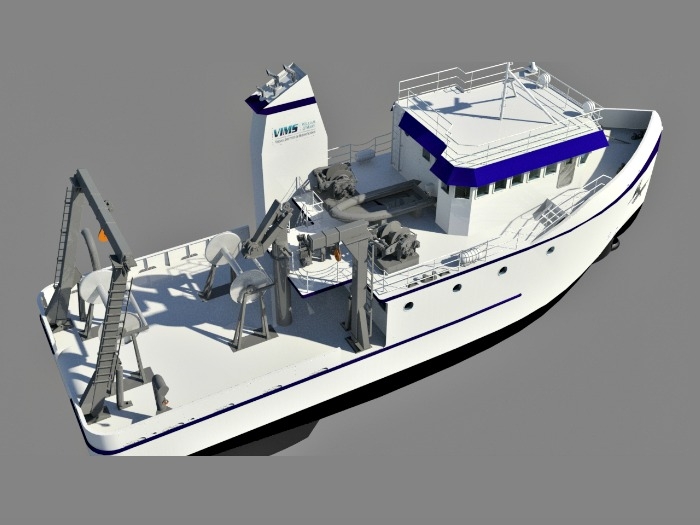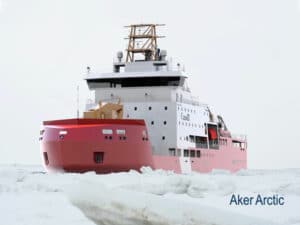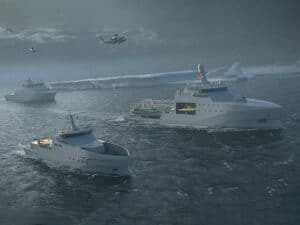
JMS Naval Architects designs research vessel
Written by Marine Log Staff
OCTOBER 14, 2015—Next month, JMS Naval Architects, Mystic, CT, is expected to complete the Contract Design Package of a 93-foot research vessel for Virginia Institute of Marine Science, Gloucester Point, VA to replace its current research vessel, R/V BAY EAGLE. A solicitation to build the new vessel will be issued to shipyards by the end of the year.
The primary mission of the Institute’s fleet is to provide inshore and offshore work platforms for the support of fisheries related oceanographic research projects. The new vessel will be capable of conducting fisheries assessments of greater capacity in deeper waters and with a larger science complement than the BAY EAGLE. In addition, the new vessel will greatly expand VIMS’ capability to perform general oceanographic research in the Chesapeake Bay and the mid-Atlantic near coastal waters. This design is intended to remain flexible and support a wide range of science missions, oceanographic outfitting, and geographic areas. It is also designed to be affordable to build and operate.
Propulsion for the new research vessel will be provided by two 660 bhp Tier 3 diesel engines coupled to a two–in/one-out marine gear driving a controllable pitch propeller shrouded within a nozzle. This unique arrangement will provide the capability to operate the vessel efficiently on a single propulsion engine when on station or during slow speed transits. This system will reduce overall engine hours and thus reduce the cost of operation and improve fuel efficiency minimizing its environmental footprint. It also powers a very robust hydraulic system required to support the suite of deepwater trawl winches and load handling equipment. The electrical system is comprised of a pair of 99 ekW generators,which provide redundant capability or can be run in parallel during peak power demands. LED lighting will reduce both power consumption and heat emitted into the accommodation spaces.
A high lift rudder and 250 hp azimuthing water jet bow thruster provide excellent maneuverability. The vessel’s capabilities are further enhanced by the installation of a state-of-the-art dynamic positioning system for station keeping.
The arrangement includes very large Wet and Dry Labs which have been designed for maximum flexibility to accommodate the many types of science that the vessel is expected to conduct. The 1,000 square foot main working deck allows for a 20 long ton science payload and provides a significant working platform for conducting fishing operations, over-the-side sampling and coring activities. There is also ample room and services to install a 20 foot science van for specialized science missions. The new research vessel will take advantage of the latest technology through an extensive array of acoustic instrumentation for the gathering and processing of data in support of fisheries research, oceanography and geophysical sciences.
The aft deck is fitted with a stern A-Frame with an 8,000 lb safe working load and side J-Frame for conducting CTD operations. The principal fishing arrangement consists of a pair of trawl net reels and a pair of trawl winches with 13,000 lb linear pull with 750 fathoms of 5/8 in. wire to support large mesh (400 mm net) bottom trawl surveys offshore with catches up to 7 tons. The winch arrangement can easily be swapped out to conduct smaller mesh surveys within the Chesapeake Bay. An electric CTD (Conductivity, Temperature, and Depth) winch with 2,000 m of 0.322” wire will also be fitted for operation from the side mounted J-Frame. There is also a knuckle boom deck crane with a 2,240 lbs capacity to support load handling operations.





Leave a Reply
You must be logged in to post a comment.